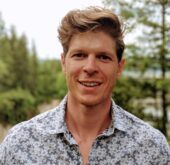Sovereign Seeds: Reclaiming MENA’s Agricultural Future
Reviving local food systems and unlocking rural prosperity
A look at their history and trends to watch

For all the attention around the nature-based carbon credit markets in the past few years, one thing’s for sure: it’s received its fair share of criticism.
Not least on the list of criticisms is the view that, despite their name, certain types of nature-based carbon projects may actually be harmful to nature; Monoculture timber plantations might be great at sequestering carbon efficiently, for example, but they are also often detrimental to native and migratory species populations that rely on biodiverse habitats or wildlife corridors to thrive.
That’s where nature credits – also known as biodiversity credits – come in. Promoted by prominent players including the World Economic Forum, these have recently gained momentum not just as an alternative to carbon financing, but also as a means to attain some of the Global Biodiversity Framework targets set out at COP15 last year; Target 19, which requires governments to increase the level of biodiversity-related private and public funding to $200 Billion annually by 2030, explicitly names biodiversity offsets and credits as key areas of development.

In this article, I provide a brief summary of the history and emerging trends of this exciting and complex market.
—
1. While public interest around nature credits has increased exponentially in the past year, the concept of such financing instruments is not new: Mentions of payments for ecosystems date back to the 1972 Ramsar Convention, and today, biodiversity-compensation market instruments (taking many names) already make up a $6 Billion annual market.
2. The market is moving from a “no-net-loss” to a “net-gain” framework for biodiversity and nature.

3. The means and methods of determining what constitutes a nature offset or credit are continuing to evolve, with a number of outcome-based methodologies emerging.
4. Despite the myriad of players innovating in the nature credit markets, efforts are being made to create a more unified, consistent market. Industry dialogues are also driving the market to become more transparent, inclusive, and easily understood, learning from the challenges of the carbon sector.
—
 Despite having been discussed in the public policy arena for about the same amount of time as the carbon markets, progress on payments for nature has lagged far behind – not due entirely to a lack of interest, but also in the huge challenges to even design a well-functioning market that is able to make sense of nature’s inherent complexity. How do we measure ecosystem functioning to determine “equivalency”, when ecosystems are made up of trees, and birds, and spiders, and rocks, and water, and pollen, and everything in between? Can nature even be “compensated”? Are we making a mistake by “privatizing nature”? Are such interventions even effective at protecting nature in a temporally and spatially appropriate way?
Despite having been discussed in the public policy arena for about the same amount of time as the carbon markets, progress on payments for nature has lagged far behind – not due entirely to a lack of interest, but also in the huge challenges to even design a well-functioning market that is able to make sense of nature’s inherent complexity. How do we measure ecosystem functioning to determine “equivalency”, when ecosystems are made up of trees, and birds, and spiders, and rocks, and water, and pollen, and everything in between? Can nature even be “compensated”? Are we making a mistake by “privatizing nature”? Are such interventions even effective at protecting nature in a temporally and spatially appropriate way?
To be sure, these are all valid questions to raise. Fortunately, however, there is some empirical data from existing markets to show that there are regulatory responses that can be made to de-risk potential negative ecological impacts, and technology is in a better state than ever to help us measure and make sense of nature transparently.
What is clear is that we must continue to focus on holding corporates and developers accountable for their impacts on nature, and provide them with the mechanism to do so.
If we want the private sector to invest more than the meagre 17% of all financing to nature-based solutions that they do today and work towards closing the $520B annual financing gap for nature, we must spend our energy participating and evolving these markets for the better. We cannot afford to sit back while biodiversity continues to be lost at rates never seen before. The nature credit markets will be one to watch.
Related Content
Comments
Deep Dives

Featuring
Clarisse Awamengwi
IE Correspondent
July 17 - 12:00 PM EST

Featuring
Russell McLeod
July 24 - 12:00 PM EST
RECENT
Editor's Picks
Webinars
News & Events
Subscribe to our newsletter to receive updates about new Magazine content and upcoming webinars, deep dives, and events.
Become a Premium Member to access the full library of webinars and deep dives, exclusive membership portal, member directory, message board, and curated live chats.
At Impact Entrepreneur, we champion fearless, independent journalism and education, spotlighting the inspiring changemakers building the Impact Economy. Diversity, equity, sustainability, and democracy face unprecedented threats from misinformation, powerful interests, and systemic inequities.
We believe a sustainable and equitable future is possible—but we can't achieve it without your help. Our independent voice depends entirely on support from changemakers like you.
Please step up today. Your donation—no matter the size—ensures we continue delivering impactful journalism and education that push boundaries and hold power accountable.
Join us in protecting what truly matters. It only takes a minute to make a real difference.
0 Comments